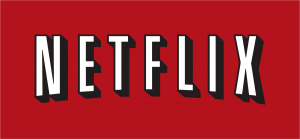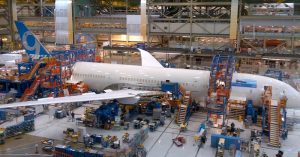While learning about the concept of Creating Shared Value (CSR), my classmates discussed Nike’s use of sweatshops. I immediately thought of Walmart; as a child, I used to love shopping for cute stickers and clothes at Walmart.
A quick Google search of “Walmart CSR” resulted in Walmart’s Global Responsibility Report popping up. Scrolling through the report, I learnt about Walmart’s commitment to shared value through sustainability, community investment, and economic opportunity. So far, they have met the triple bottom line of sustainability.

Walmart’s 2016 Global Responsibility Report
I recall Walmart’s “Faded Glory” clothing brand that is made in Bangladesh. After further research, I found out about a disastrous fire at a Bangladeshi garment factory that killed 112 people; Faded Glory clothes were made here. The factory lacked sufficient emergency exits and safety procedures and features.
Other articles point to use of child labour in factories that Walmart has contracts with to make clothing. These children are physically abused and work long hours for seven days a week, all for the pittance of 6.5 cents per hour. According to these children, “If they could earn just 36 cents an hour, they could climb out of misery and into poverty, where they could live with a modicum of decency.”

Faded Glory manufactured in Bangladesh
Walmart’s commitment to shared value seems to be a sham; how can it trumpet its contribution to Global Responsibility when it uses sweatshop labour?
“Just because you can doesn’t mean you should” -Professor Ann Stone
As the largest company in the world by revenue, Walmart has considerable buyer power in the textile industry. Even though it states that it is empowering workers in Bangladesh’s textile industry, Walmart is most likely still contracting out to factories which have unsafe working conditions and minuscule wages.
Walmart is a traditional corporation; it is understandable that Walmart is pursuing the motive of profit. But to create shared value, as stated as its corporate vision, the triple bottom line of social, environmental, and economic sustainability must be met. Walmart has doubled its fleet efficiency, reducing 650,000 metric tons of CO2 and prices for customers. Its investment in the community is admirable, however, this may be negated by its exploitation of workers in developing countries.
As fellow human beings, we all have a responsibility to treat each other with respect and dignity. Even though reinventing how the company functions involves risk and loss of profits in the short run, it is worth the investment; the world will be a better place for all.
Until then, I won’t be buying any more textile products from Walmart.
Word Count – 423
Picture Credits:
Walmart’s 2016 Global Responsibility Report – Found at http://corporate.walmart.com/2016grr; copyright to Wal-Mart Stores, Inc.
Faded Glory manufactured in Bangladesh – Found at http://www.dailykos.com/story/2012/11/26/1164800/-Walmart-clothing-found-in-Bangladeshi-factory-after-fire-that-killed-112; provided to The Nation by the International Labor Rights Forum.
References:
Bauer, Monica. “Always Low Prices, Rarely Human Rights: Wal-Mart and Child Slave Labor.” IHS Child Slave Labor News. IHS Child Slave Labor News, 1 Nov. 2005. Web. 27 Oct. 2016. <http://ihscslnews.org/view_article.php?id=68>.
“Children Found Sewing Clothing For Wal-Mart, Hanes & Other U.S. & European Companies – National Labor Committee.” OnLabor. Labor & Worklife, n.d. Web. 27 Oct. 2016. <http://www.law.harvard.edu/programs/lwp/NLC_childlabor.html>.
Clawson, Laura. “Walmart Clothing Found in Bangladeshi Factory after Fire That Killed 112.” Daily Kos. Kos Media, LLC, 26 Nov. 2012. Web. 27 Oct. 2016. <http://www.dailykos.com/story/2012/11/26/1164800/-Walmart-clothing-found-in-Bangladeshi-factory-after-fire-that-killed-112>.
Lo, Puck. “Walmart Faces Increased Scrutiny Over Bangladesh Sweatshop Fire.” CorpWatch. CorpWatch, 7 Jan. 2013. Web. 27 Oct. 2016. <http://www.corpwatch.org/article.php?id=15804>.
Otterson, Joe. “John Oliver Rips Gap, Walmart, H&M Clothing Over Sweatshop Labor, Unsafe Working Conditions (Video).” TheWrap. The Wrap, 27 Apr. 2015. Web. 27 Oct. 2016. <http://www.thewrap.com/john-oliver-rips-gap-walmart-hm-clothing-over-sweatshop-labor-unsafe-working-conditions-video/>.
Wal-Mart Stores, Inc. “2016 Global Responsibility Report.” 2016 Global Responsibility Report. Wal-Mart Stores, Inc., 2016. Web. 27 Oct. 2016. <http://corporate.walmart.com/2016grr>.






